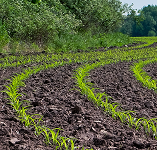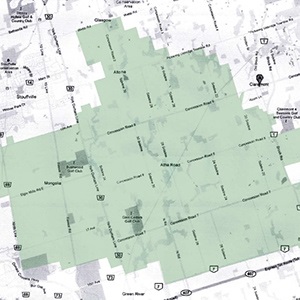Ag Lands in Pickering Center of Airport Debate
Posted: August 22, 2016
Categories: GoodFoodBites / News from Sustain Members
 For over 44 years, the federal government has considered plans to build an airport on Federal Lands expropriated in 1972 outside of Pickering ON. With only 5% of Ontario land base considered suitable for agriculture, the threatened loss of 9,000 acres if the airport is built is significant.
For over 44 years, the federal government has considered plans to build an airport on Federal Lands expropriated in 1972 outside of Pickering ON. With only 5% of Ontario land base considered suitable for agriculture, the threatened loss of 9,000 acres if the airport is built is significant.
Land Over Landings, a Sustain Ontario member, has been working for decades to protect this prime agricultural land for its intended purpose.
In an August 6 opinion piece in the Toronto Star, Ontario entrepreneur Samer Bishay calls the new airport “win-win-win”. His position generated a windfall of letters to the editor, the majority voicing opposition to the Pickering airport and asserting the need to protect the agricultural lands. From those letters:
Top 3 reasons to put prime agricultural lands first in Pickering
Map of Expropriated Federal Lands 1972

1. We are losing farmland at an astonishing rate. With a growing population and threats to global food production from droughts and other extreme weather, we need to preserve productive farmland close to home now more than ever.
[F]armland in the Greater Golden Horseshoe is disappearing at an incredible rate (180,000 acres lost between 2006-2011 alone) while at the same time the population is growing exponentially (4.5 million more people expected by 2041). Laura Springate, Whitby
2. We don’t need another airport; we already have underutilized airports in the GTA.
Samer Bishay’s article did not reference the fact that there already exist other underutilized airports within the GTA catchment area, including John C. Munro Hamilton International Airport.
Hamilton International is a leading passenger and cargo base for southern Ontario, and is able to absorb significant increased passenger traffic. The infrastructure at Hamilton – runways, and connecting roads – is already in place. P.M. Valentine, Claremont
3. Protecting farmland supports local agri-business. Allowing the land to be used for agricultural purposes would increase the amount of edible food and secondary local business that grows out of a vibrant farm economy.
He’s also wrong about the crops on the Pickering Lands today; there isn’t that much corn, and not all of it goes for ethanol. Most crops are soy and wheat. These are all cash crops, grown not because they are the best or wisest or most productive use of the lands, but because the federal government has maintained a restrictive policy of one-year leases, effectively prohibiting the rebuilding of farm infrastructure (barns, tile drainage); purchase of new equipment (a combine costs about $500,000); or investment in orchards, livestock, or value-added business (cideries, sausage-making, artisanal cheeses).
Nor does it allow for secondary businesses that would naturally grow out of a vibrant farm economy — farm B&Bs, farm dealerships, food processing, restaurants. All of these would be possible with the lifting of the cold dead hand of Transport Canada, the threat of an airport removed, and the land protected as farmland within the Rouge National Urban Park. That is what Land Over Landings and our partners (David Crombie, Glenn De Baeremaeker, Environmental Defence, Food and Water First, and others) are working towards. Mary Delaney, Brougham, chair, Land Over Landings
In April of this year, Dr. Gary Polonsky, independent advisor named by the Conservative government in 2015, submitted his report on the Pickering Lands to Transport Canada. Meanwhile, Land Over Landings’ proposed study of economic potential of agriculture on the lands is gaining support, and the Pickering Lands Aviation Sector Analysis by Transport Canada is expected to be completed in two years.
Consider Taking Action with Land Over Landings to protect prime agricultural land.
One response to “Ag Lands in Pickering Center of Airport Debate”
Leave a Reply
You must be logged in to post a comment.

I recall all the expropriation and controversy over this and the plans (growth is good?) that were driving it. Like Mirabel – at the time – there were great hopes of economic stimulus (and we called it creating the future of transportation). If we had done it then what would the landscape of Southern Ontario look like now? If we do it now what will we do to the future of the the zone and all regions adjacent? It has taken all this time to construct a rail link to downtown from YYZ. It seems we are not so forward thinking, realistic, nor visionary. Grand designs aside the loss of farmland and greenbelt (of breaching it) has implications that are so far reaching and further entrenches our dependency on food and feed imports.